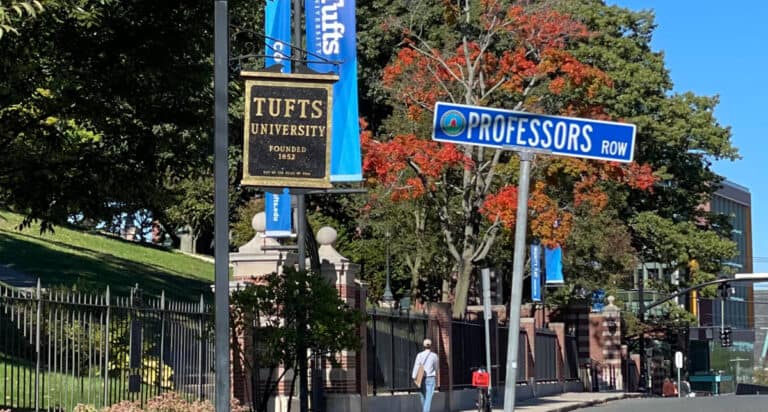“College is one of the most expensive purchases a family will make in their lifetimes,” according to Jeff Levy, a Certified Educational Planner with 16 years of experience as an educational consultant.
Levy shares the mistakes families make that can seriously affect their teen’s ability to maximize merit and financial aid.

Financial aid and FAFSA mistakes
1. Believing advice from people who aren’t qualified to give it.
I heard from a parent that an English teacher at his daughter’s school recommended “a little-known tip.” At their College Night, the teacher suggested that students select “not applying for financial aid” on their college application and wait until they’re admitted to submit the FAFSA.
This advice couldn’t be more incorrect, unethical, and potentially catastrophic to the family. If you expect to apply for financial aid, check “yes” on the college application and submit your forms well before the college deadlines.
2. Deciding not to apply for financial aid because “we’ll never qualify.”
Most families have no idea whether they will qualify or not. Data consistently shows that many who are the most eligible for need-based aid never submit the FAFSA.
3. Not filing your income tax returns before applying for financial aid.
For current high school seniors enrolling in college in the fall of 2024, the FAFSA did not become available this year until December because of the major overhaul mandated by Congress in December 2020. Questions on the form will require accurate financial information from the 2022 tax year, and, in almost all cases, those tax returns will need to be provided.
4. Missing the college’s institutional deadline.
Keeping track of all these can be annoying if your teen applies to many schools with Early Decision, Early Action, and Regular Decision deadlines. But it must be done. Going to each college’s website to gather and collate this information will take you or your child about 20 minutes.
5. Deciding not to apply for financial aid as a freshman and planning to ask for it later.
Many schools will give a full-pay applicant a bump in the admission process in exchange for the higher net revenue they bring to the institution. If such an applicant suddenly requests financial aid in later years, some schools will not consider that request for institutional aid; others might delay it by a full academic year. Do not make the mistake of “outsmarting” the admission office if there is even a possibility you may require institutional aid in later years.
6. Not having a savings plan for college.
One of the most destructive myths about paying for college is that the financial aid formulas will wipe out your savings. People who advise this are either ill-informed or have a hidden agenda. In the needs calculation, the penalty for savings is five cents on the dollar! The best way to prepare for the cost of college is to save, and the best way to save is to use time to your advantage. Start early and save regularly, even a small amount each month.
7. Taking a work bonus in the FAFSA “base year.”
The most significant factor in determining what a family is expected to pay towards college is their Adjusted Gross Income on line 11 of Form 1040 of their federal tax returns.
Any income that can be postponed from the base year (2023 for students starting college in 2025, 2024 for students starting college in 2026, etc.) to the following year will decrease the applicant’s Student Aid Index – SAI and increase their eligibility for financial aid.
8. Listing the 529 savings plan as a student asset instead of a parent asset.
Even though the student is the beneficiary of the 529 savings account and the parent the custodian, the Department of Education has stipulated that these savings plans should be listed as parent assets. This is an essential advantage because parent assets are “penalized” about one-quarter as much as student assets in the federal and institutional need methodologies.
9. Accumulating parent savings in a student-owned account.
While this can be a tax advantage, it is always a financial aid disadvantage. You must check with your tax advisor for the best approach. Parent assets are penalized at about five cents on the dollar, while student assets are penalized about between 20 and 25 cents on the dollar.
10. Allowing the grandparents to write the check directly to the college.
Starting with the 2024-2025 FAFSA for current high school seniors and transfer applicants, the FAFSA will no longer ask the student if anyone other than their parents has given the student any money or paid any bills on the student’s behalf. So there is no longer a problem if grandparents (or others) want to contribute to paying college costs.
However, at the 150 undergraduate institutions that also use the CSS Profile, any money paid on the student’s behalf from anyone other than parents is reportable on the CSS Profile, will be considered untaxed student income, and could significantly reduce the student’s eligibility for need-based institutional aid.
11. When parents are separated or divorced, believing it’s the parent the student spends more time with who will complete the FAFSA.
Beginning with the 2024-2025 FAFSA, the divorced/separated biological parent who must complete the parent section of the FAFSA is the one who has provided more financial support to the student in the year to date.
12. Borrowing more than you can afford.
College is one of the most expensive purchases a family will make. Borrowing part of this cost to earn a college degree is not an unwise choice, just as borrowing part of the cost of a home can be an intelligent way to make homeownership possible. However, borrowing too much for college can be catastrophic.
Each family will need to decide for themselves how much debt is reasonable. A good rule of thumb is to keep total undergraduate loan debt below what the student expects to earn during their first year out of college. In other words, if students borrow the maximum lifetime limit of $31,000 in undergraduate federal student loans, they can successfully manage monthly repayments if their first job after college pays at least that amount annually before taxes.
13. Not taking advantage of low-interest federal student loans.
Federal student loans are generally packaged as part of the financial aid award. These are low-interest loans with many built-in repayment protections, usually far safer and less costly than private bank loans.
The federal cap on how much a student can borrow over four years of college is $27,000, and the lifetime limit is $31,000. Repayments begin six months after graduation. I recommend taking advantage of this loan program if it helps the family meet the high cost of college.
14. “If she gets into _______, we’ll make it work!”
This thinking usually leads parents straight into the abyss of excessive borrowing. Parent loans (federal and private) have higher interest rates, fees, and stricter repayment terms than federal undergraduate student loans. Parents must think carefully about how many actual earning years they have left before going into substantial debt at an advanced age. And there are always less expensive options for college.
15. Not calling the financial aid office when you have a question.
These folks are not the IRS and not your enemy. They are usually happy to answer your questions and can be an excellent resource to help you navigate the complexities of the financial aid system.
If you are looking for reliable and timely advice about paying for college and college admission, join Jeff Levy and other experts in our membership, College Admissions: Grown and Flown.
Financial and merit aid resources for students and parents
FAFSA (Free Application for Federal Student Aid)
You Might Also Enjoy:
Time for the Dreaded Family Conversation about College Cost Jeff Levy leads us through the critical discussion families need to have about affording college. THIS is the place to begin if you have not already started that conversation.









